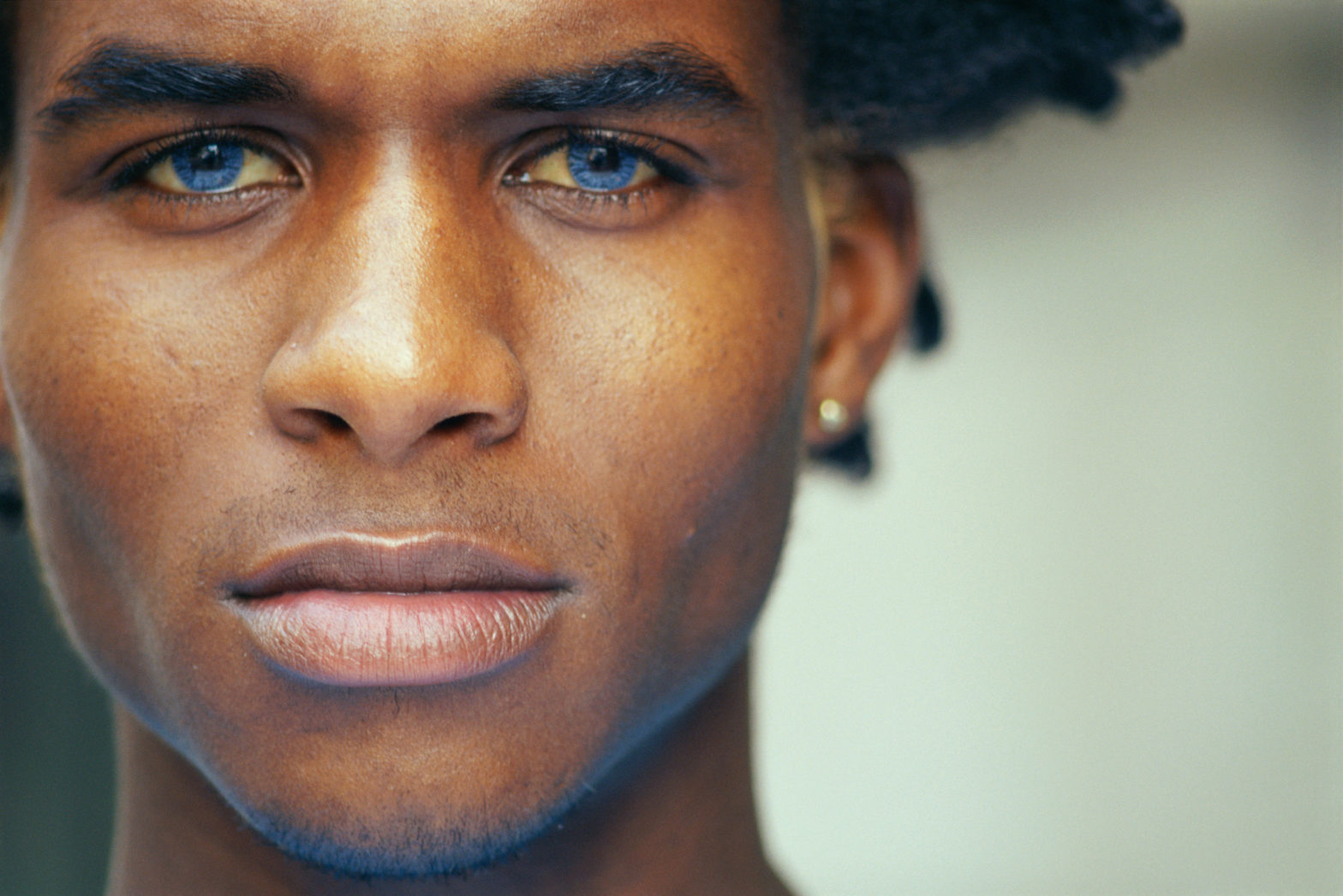Blue is the second most common eye color globally, with an estimated 8 to 10 % of people having blue eyes. A majority of these people are of European descent, however, Black people can be born with blue eyes even though it’s pretty rare. From blonde hair, to freckles, to Irish origins, it’s impossible to confine Black people into a singular expression.
To understand how this uncommon occurrence can happen, you must first look at the origins of blue eyes, which scientists say is a fairly newer phenomenon.
The Science Behind Blue Eyes
Early research from the University of Copenhagen studied 800 men and women from several countries with blue eyes. The team found that all the participants have the same DNA sequence for blue eyes, thanks to a genetic mutation that took place an estimated 10,000 years ago.
“Originally, we all had brown eyes,” Professor Hans Eiberg from the university’s Department of Cellular and Molecular Medicine, argues in the study. “But a genetic mutation affecting the OCA2 gene in our chromosomes resulted in the creation of a ‘switch’ which literally ‘turned off’ the ability to produce brown eyes.”
The OCA2 gene formerly called the P gene is a gene code that produces a pigment called melanin, according to scientists with Medline Plus. Melanin is the substance that gives skin, hair, and eyes their color.
Scientists believe the mutation altered the amount of melanin produced in the iris of the eyes. Because the melanin concentration is too low to produce brown eyes, blue eyes are produced instead.
It is believed that almost every blue-eyed person on earth today inherited the same gene mutation from the same source, according to research from Edmund Custers, who has spent more than a decade in clinical research writing about human anatomy and physiology.
There are some exceptions, as health conditions such as Waardenburg syndrome and ocular albinism can affect pigmentation and as many as six different eye colors.
Where Do You Find The Majority of Blue-Eyed People?
Europe has the widest variety of eye color, according to Custers, who adds those of European descent are the largest population of blue eyes. Europe was the epicenter of the blue-eye gene mutation. More than 80 percent of the inhabitants of Estonia and Scandinavian countries have blue eyes.
Black People With Blue Eyes
Custers’ research suggests that Black people with blue eyes are affected by the same OCA2 genetic mutation in the same way any other human is, despite the mutation originating in Europe. It’s rare to see Black babies born with blue eyes but not impossible.
Waardenburg syndrome can also impact the eye color in people of color.
